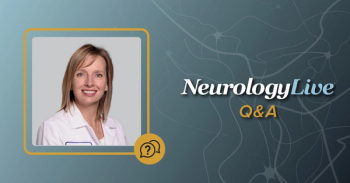
Initial Results Prove Positive for Low-Dose AXO-AAV-GM1 in GM1 Gangliosidosis
These data follow a recent announcement from Sio Gene Therapies that the first patient in the high-dose cohort has been dosed.
Sio Gene Therapies recently announced positive 6-month follow-up data from the low-dose (1.5x1013 vg/kg) cohort of phase 1/2 trial of AXO-AAV-GM1 for GM1 gangliosidosis (GM1-G; NCT03952637) that show the treatment was generally well tolerated with a favorable safety profile and provide early indications of clinical disease stability.1
The data show that AXO-AAV-GM1 had an acceptable safety profile in 5 patients. Serum beta-galactosidase (β-gal)
“These data highlight the potential for the investigational gene therapy to treat the underlying genetic cause of this disease, preserve functional outcomes, and reduce disease burden for patients and their families. Further, the safety profile observed in the low-dose cohort support moving forward with the high-dose cohort of AXO-AAV-GM1 in the ongoing phase 1/2 study,” said Gavin Corcoran, MD, chief R&D officer, Sio Gene Therapies, said in a statement about the low-dose cohort data.
A total of 5 patients with GM1-G type 2 were evaluated; 4 of these patients aged 32–68 months at time of dosing had late-infantile onset GM1-G and 1 patient aged 45 months at time of dosing had juvenile-onset GM1-G. All patients had documented biallelic mutations in GLB1 gene, deficiency of β-gal enzyme activity, and clinical phenotype consistent with GM1 gangliosidosis. They exhibited impairment of fine motor skills and change in walking pattern on clinical history at baseline.
READ MORE:
Serum β-gal enzyme activity increased from baseline by an average of 110% (range, 71–138) during the 6-month observation period, representing an approximate doubling in enzyme activity after gene transfer. At month 6, serum enzyme activity increased by an average of 71% from baseline (range, 33–127). Cerebrospinal fluid (CSF) samples were collected from all patients through lumbar puncture, and development and validation of biomarker assays for CSF is currently ongoing.
Subdomain Growth Scale Value scores in the VABS-3 remained stable or improved in 4 out of 5 patients at all timepoints evaluated over the 6-month observation period. Similarly, FM and UM scores remained stable in all 5 patients. CGI scores mildly improved in 4 out of 5 patients and remained stable in the fifth patient. Additional data will be collected at the 12-month evaluation including several measures of the systemic manifestations of GM1-G.
Adverse events (AEs) were mostly mild to moderate. Transient aspartate transaminase elevations were reported in 4 subjects, none of which required clinical intervention. No other AEs indicative of impaired liver function occurred, and no clinically relevant changes were observed in platelet count.
A serious AE was reported by 1 patient that experienced bacterial sepsis due to a peripherally inserted central catheter line infection, which was considered unrelated to the treatment and resolved within a few days following line removal and administration of intravenous antibiotics.
The data follow Sio’s early December 2020 announcement that the first patient has been dosed in the high-dose (4.5x1013 vg/kg) cohort of the clinical trial. Two patients now have been dosed without complications. AXO-AAV-GM1 has previously received both Orphan Drug Designation and Rare Pediatric Disease Designation.2
“AXO-AAV-GM1 is the only gene therapy in the clinic targeting patients with type 1 and type 2 GM1-G, a devastating and fatal pediatric disease,” Corcoran said in a statement about the high dose cohort. “The initiation of the high-dose cohort builds on evidence of extension of survival in naturally-occurring GM1 disease animal models and encouraging clinical data from an expanded access study conducted by a National Human Genome Research Institute team.”
REFERENCES
1. Sio Gene Therapies announces positive six-month follow-up data from low-dose cohort of phase 1/2 trial of AXO-AAV-GM1 for GM1 gangliosidosis. News release. Sio Gene Therapies. December 15, 2020. Accessed December 15, 2020. https://www.globenewswire.com/news-release/2020/12/15/2145743/0/en/Sio-Gene-Therapies-Announces-Positive-Six-Month-Follow-Up-Data-from-Low-Dose-Cohort-of-Phase-1-2-Trial-of-AXO-AAV-GM1-for-GM1-Gangliosidosis.html
2. Sio Gene Therapies announces first patient dosed in high-dose cohort of AXO-AAV-GM1 clinical trial in patients with GM1 gangliosidosis. News release. Sio Gene Therapies. December 2, 2020. Accessed December 15, 2020. https://www.globenewswire.com/news-release/2020/12/02/2138178/0/en/Sio-Gene-Therapies-Announces-First-Patient-Dosed-in-High-Dose-Cohort-of-AXO-AAV-GM1-Clinical-Trial-in-Patients-with-GM1-Gangliosidosis.html
Newsletter
Keep your finger on the pulse of neurology—subscribe to NeurologyLive for expert interviews, new data, and breakthrough treatment updates.


























